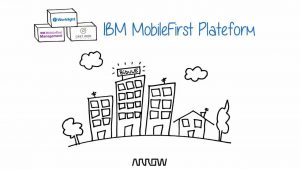While IBM Worklight is now being adopted by a lot of developers around the world to satisfy their mobile application development needs, there are quite a few things that you probably did not know about IBM Worklight and its capabilities.
- IBM Worklight is a new and advanced mobile application development platform that helps develop, connect, run and manage HTML5 web, hybrid and native applications.
- IBM Worklight is similar to RAD, in the sense that it allows more control over the actual code; while Web Experience Factory has in-built integration builders and profiling. Collectively, WEF and Worklight can save time and effort if developers use WEF to do the web services and integration, and use Worklight to develop the app structure.

- Utilizing WEF provides out of the box builders for Worklight to connect to numerous external applications. However, Worklight provides for a few app management features that are not default with WEF. In fact, Worklight actually provides a small MDM (Mobile Device Management) solution which has features from App updates to app enabling/disabling.
- Another feature of the IBM Worklight kit is that it ships along with Mobile Browser Simulator, which is useful if developers don’t want to install Android Emulators or don’t have Apple Macs for Xcode.
- Worklight already has PhoneGap/Cordova implementation, thus Device features can easily be used, and it also allows you to write your own custom plug-ins easier.
- With the need also for native development which is not catered to by WEF, developers can replace a HTML based page into a complete native driven page within the application thus making your app a complete hybrid mix.
- Worklight is Dojo savvy, thus making it possible to utilize client-side aggregation introduced in WEF 8.0 based on Dojo.
So in brief, existing Portal customers will always find it quickest and easiest to go mobile leveraging WEF and build browser based mobile apps, and then later on leveraging IBM Worklight to create hybrid and native apps.





